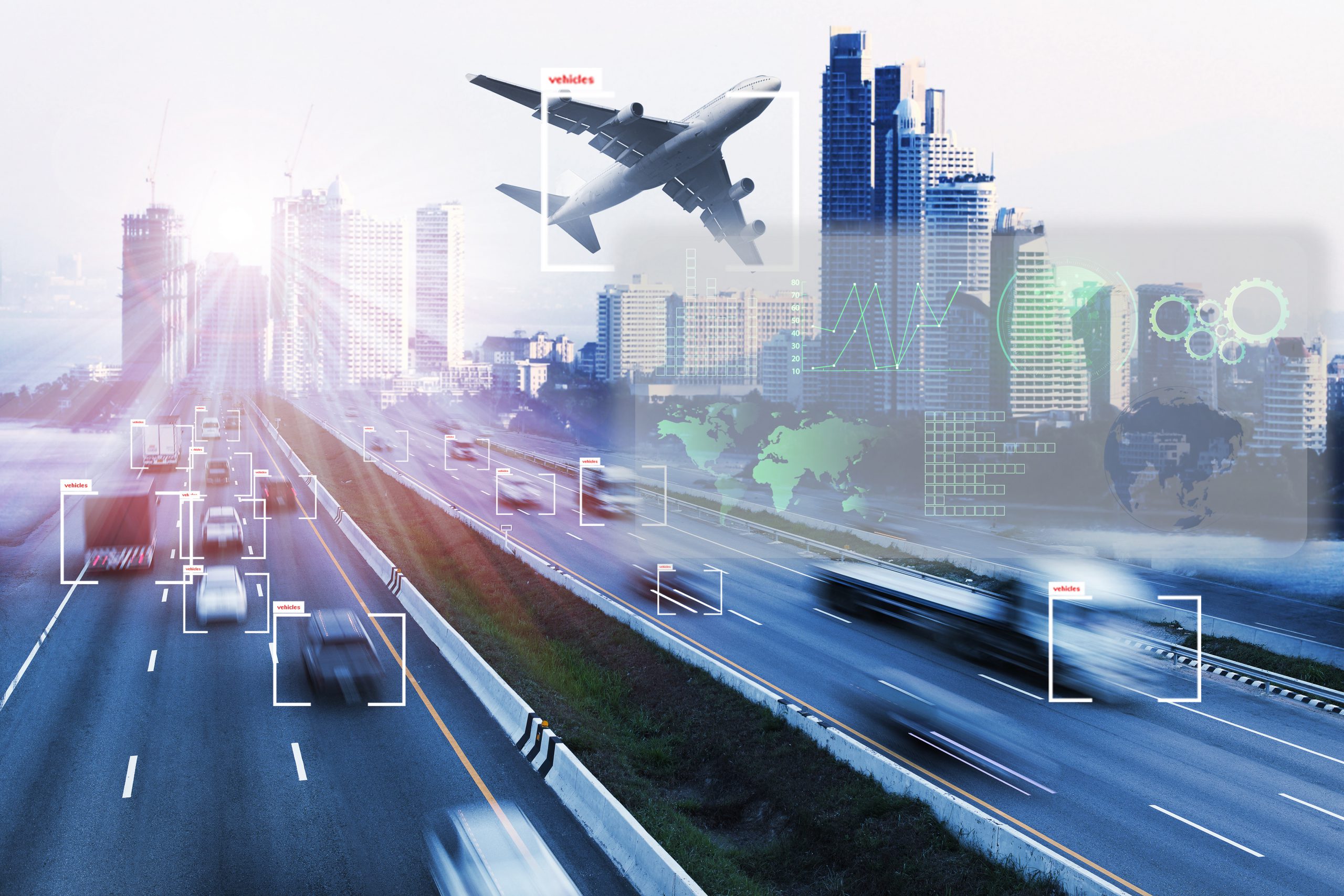UK Transport Vision 2050: thoughts on autonomy
Road vehicles and autonomy
Although this article focuses on road vehicles, we think the key bottlenecks and challenges are similar across maritime and air.
We are beginning to see the two strands of vehicle autonomy develop in tandem, but we are some way off seeing them coalesce. Those two strands are:
- Road vehicles gaining more driving automation features and sophistication.
- Dedicated self-driving vehicles doing useful tasks
Are these actually different, some ask? Definitely.
The Society for Automotive Engineers, (SAE), came up with a standard for defining six levels of automated driving, the Taxonomy and Definitions for Terms Related to Driving Automation Systems for On-Road Motor Vehicles.
We can see how this developed, but our fears of the great divide between the two strands still seem to remain. For the purists amongst you, we continue to believe that SAE Level 3 (conditional driving automation) will never appear. Levels 0 to 2, yes, of course, we have them today. Level 4 yes – we are getting there. Level 5 – probably never, but we really don’t need it.
For those of you who are not familiar with the automation levels from SAE, let me enlighten you:
- Level 0 – no driving automation. The human driver is always responsible for what is called the dynamic driving task: the steering, applying the accelerator and the brakes and everything else.
- Level 1 – driver assistance. Some system on the vehicle undertakes either the lateral control (steering) or the longitudinal control (accelerator and brake). The human driver has legal responsibility for the behaviour of the vehicle.
- Level 2 – partial driving automation. Some system on the vehicle undertakes both the lateral control (steering) and the longitudinal control (accelerator and brake) at the same time. But the human driver retains legal responsibility for the behaviour of the vehicle at all times.
- Level 3 – conditional driving automation. For some of the time, a system on the vehicle undertakes both the lateral control and the longitudinal control of the vehicle. The automated driving system (ADS) has legal responsibility for the behaviour of the vehicle when this is engaged. (In fact, it is a shared responsibility between the system developer and the operator, but for our purposes, I am using the ADS term when it isn’t the human driver). The human driver may do something else but should be able to take control when prompted to do so by the ADS.
- Level 4 – high driving automation. The ADS can operate the vehicle under some circumstances, entirely without a human driver. Hence it can run unoccupied. Legal responsibility for driving lies with the vehicle automated driving system.
- Level 5 – full driving automation. The automated driving system can operate the vehicle under any and all circumstances in which a good human driver could operate it.
Automation driving scenarios
The Tesla Autopilot system is a level 2 system, because despite the term “full self- driving” being used in their advertising, it isn’t. The human driver is still legally responsible. This confusion should end with the new automated vehicle bill passing through Parliament at the moment. It will protect certain terms and make it an offence to use certain inappropriate terminology which could confuse users. The Tesla system requires the driver to keep their hands on the wheel at all times (feet off, hands on, brain on). So the Tesla system is level 2.
The Ford BlueCruise system does much more driver monitoring. It allows the human driver to remove their hands from the steering wheel, but the driver is still legally responsible. The driver monitoring system uses an infrared camera to ensure the driver is awake, alert and watching the road. If they stop watching, the system gives a combination of visual and audible warnings, depending on the direction of the driver’s gaze (feet off, Hands off, brain on). BlueCruise is also a level 2 system.
Now we get to interesting part. A level 3 system allows the driver to remove their attention from the road, because the ADS has legal responsibility for driving (feet off, hands off, brain off). However, if the system encounters an issue and cannot cope, it can request to hand over control to the human driver. But crucially, the length of time it takes for a driver to return their attention will vary depending on the individual and the circumstances. The initial UNECE Automated Lane Keeping System (ALKS) regulation says that 10 seconds is enough time. Human factors studies suggest that this is highly optimistic and in some cases, 20, 30 or even 60 seconds might not be enough under some circumstances. Conversely, 10 seconds is quite a long time when it comes to the development of a critical scenario on the road, 30 seconds is an eternity during which a vast range of things could happen. In practice, if an automated driving system cannot cope with a dynamic scenario, it probably needs help within 2 or 3 seconds. It is highly unlikely it will be able to drive safely for tens of seconds, then hand over to the human driver after that time. If it can cope for 10 or 20 seconds, it can probably cope with the scenario completely – so no need to wake up the driver! That is a basically a level 4 system.
Of course, there will be times and scenarios when the ADS can’t cope. So to be safe, it shouldn’t put itself in those scenarios. This is level 4. At the moment, most level 4 systems are under trial or testing. They will not be deployed as level 4 until they are robust enough to work under all the conditions they might encounter during a mission. This means that they may well be tightly limited to “easy” roads.
The early level 4 systems in private vehicles are likely to be valet parking or motorway driving. Autonomous valet parking allows you to drop off your car in a safe location, and the car parks itself with nobody in it. It is very low speed, and such AVP carparks are likely to be well mapped and dedicated to level 4 vehicle – no pedestrians wandering around. They may have infrastructure support too in the early days. This may be cameras which inform the vehicle of where it is and where the spaces are.
Motorway driving is also relatively easy – all traffic is travelling in the same direction, no pedestrians, cyclists or horses, and a nice hard shoulder if all else fails. A motorway level 4 vehicle could wake up the driver say five minutes before likely arrival at the motorway exit, and could slow down to give them more time to wake or re-engage if required. This is much more realistic than level 3.
As time goes on, we can expect level 4 vehicles to cope with ever higher levels of complexity, covering more and more of the road network. This is reflected in the diagram on pages 28 and 29 of the Transport Vision 2050, with the different shades of pink.
Why is level 5 unachievable? A few metres from my daughter’s old school is a gated through road. It is a public road, but to get along it, the driver needs to get out, open a gate, get in, drive through, get out, close the gate, then get back in and drive on. No automated vehicles proposed as yet can do this. So they will not be level 5 in the UK. Similarly, when faced with crossing a river, and use of a ford (the submerged roadway, not the vehicle brand this time), a level 5 vehicle will need to be able to assess depth of the water and the speed of flow to determine if it is save to cross. That’s a really tricky technical challenge. But, like the gated road scenario, there will almost always be another route that can be used instead. The level of complexity, capability and cost is generally unnecessary for almost all vehicles. Hence level 5 is just not economic and not needed.
Eventually, perception sensors will become cheaper, more reliable, smaller, lighter, etc. and computer power will do the same, leading to a merging of the two strands – in short, normal road vehicles will become level 4 capable, with ever increasing abilities leading to ever wider use. It will be gradual with no sudden or widespread change across the vehicle parc.
– Richard Morris, Innovation Lead for Automated and Connected Vehicles, Innovate UK
Feedback
If you would like to offer feedback to help us further shape and inform the UK Transport Vision 2050, please use our feedback form to submit your comments.
Reimagining transport: UK Transport Vision 2050
The UK Transport Vision 2050, first published in 2021, has been updated based on increased understanding, changing circumstances and feedback from over 200 partners.




